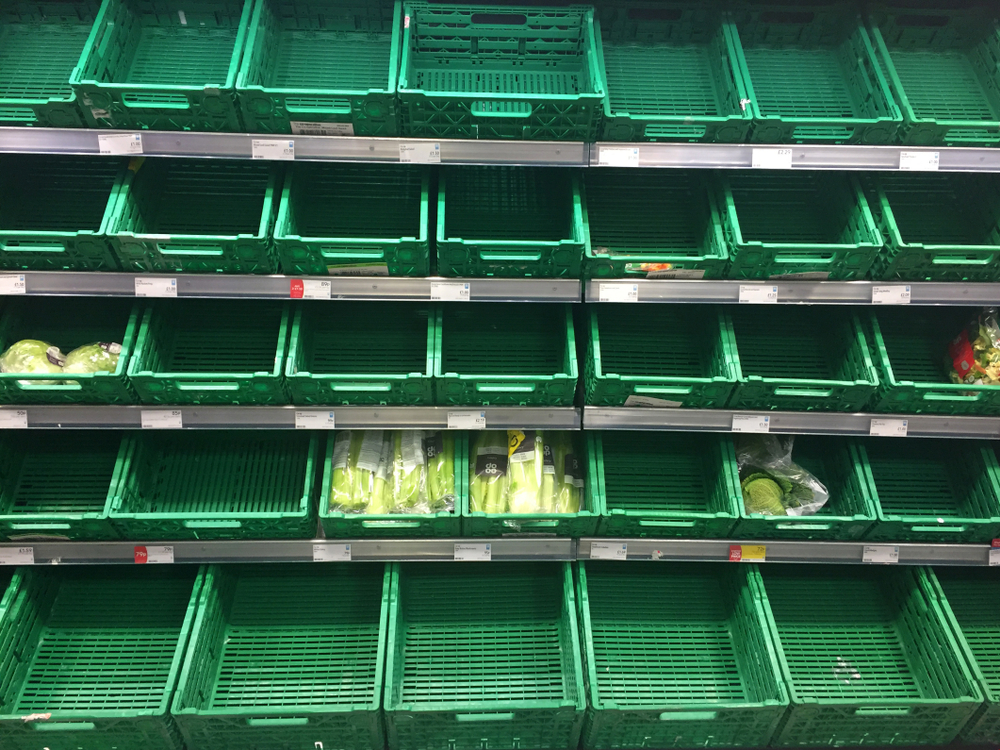
With retailers facing continued supply chain disruption – from the long shadow of covid-19 to Russia’s war on Ukraine and climate change – shoppers are reporting increased levels of out-of-stock products, according to the latest data from Retail Insight, a provider of store operations execution software.
Original research of over 1,000 UK shoppers by Retail Insight revealed that 82 per cent have experienced out-of-stock products in-store in the past 12 months, up +11 percentage points year-on-year, while 60 per cent have experienced the same issue online, an increase of +6 per cent since 2022.
Seven in ten (71 per cent) say product availability has become more of a problem since the pandemic, with three-quarters of shoppers (75 per cent) now experiencing more out-of-stocks since the start of the cost-of-living crisis. Sixty (60 per cent) of customers reported that their favourite brands have been less available in-store across the last 12 months, while 45 per cent had noticed more items are missing from their online grocery orders.
With retailers still reporting covid-related disruption to supply chains, supermarkets have also come under pressure from climate challenges, political unrest and macroeconomic forces. From the ‘salad crop shortage’, which saw shelves stripped of fresh produce due to unseasonably cold weather, to soaring energy prices and avian flu hitting poultry farmers and prompting egg shortages, retailers have faced many supply chain challenges.
While macroeconomic factors impacting product availability hit the headlines, UK shoppers polled by Retail Insight blamed poor product availability on the cost of living, with 57 per cent citing the growing cost of food production and a further 56 per cent pointing to inflation as the biggest factors impacting stock levels. Meanwhile, 43 per cent said the increased costs of logistics were liable for the problem of rising out-of-stocks, and a further 40 per cent blamed Brexit.
Paul Boyle, CEO of Retail Insight, commented: “Regardless of the causes – of which there are many and, rather unjustly, a great number of which remain outside of a retailer’s direct control – poor product availability doesn’t just impact customer experience at the shelf edge. It can cost retailers lost sales and, even more detrimentally, long-term loyalty.”
Over a quarter (27 per cent) of UK consumers would question their loyalty to a grocer if out-of-stocks became a regular occurrence and a further 21 per cent would abandon their shopping mission and leave the store without buying other items in their basket if they experienced a gap on shelf. Meanwhile, 27 per cent would switch their allegiance to a competitor supermarket.
“While the figure varies from grocer to grocer and from category to category, the accuracy of availability of product on the shelf can vary significantly, with inventory records usually only 50-60 per cent accurate,” Boyle continued. “When items are unavailable, hidden or damaged, the resulting lost sales can be as much as 8 per cent of revenue – an opportunity retailers can ill-afford to leave on the table. By leveraging ‘live’ data, retailers can build a more accurate picture to ensure better product availability, putting the right product on the right shelf at the right time to keep their customers happy and encourage shopper loyalty.”








Share